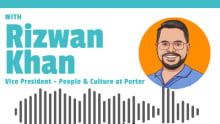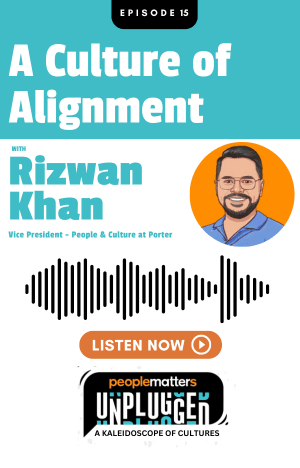The HR tech market grew exponentially amid the uncertainty: Global Head of People Analytics & HR tech, PayPal

READ the August 2021 issue of our magazine: The Rise of Work Tech
Dr. Serena Huang is currently the Global Head of People Analytics & HR Technology at PayPal. She is a thought leader in people analytics, HR technology, future of work, and employee experience with expertise spanning large multinationals including GE and Deloitte. Dr. Huang is also a long-time practitioner of mindfulness and leads guided meditations in corporate settings to boost employee well-being.
As a data analytics executive, Dr. Huang is passionate about leading change, building high-performing global teams, and helping business leaders see data as an asset in large organizations. She excels at showing executives the “art of the possible” through both 1-on-1 dialogues and facilitated hands-on workshops, and co-creating customizable, scalable solutions in predictive analytics in HR, workplace strategy, supply chain, and litigation domains. Dr. Huang has built and led on-shore/off-shore analytics teams and capabilities from the ground up in highly matrixed multi-national corporations over the past 10 years.
Here are the excerpts of the interview.
As the pandemic influences how people work, it’s also impacting the tech that makes that work possible. How has the HR tech market evolved over the past one and a half years?
The HR tech market has had explosive growth over the past one and a half years. There are now have multiple unicorns in this space—Visier is the newest addition to the list of companies valued at more than 1 Billion dollars. I have also seen advancements in technology aiming at improving safety, collaboration, and inclusion for employees. Another interesting trend I’ve seen is the expansion of product offerings via acquisitions, such as the Workday-Peakon deal earlier this year, which gives Workday a new capability around employee experience and feedback.
HR Tech, which was by design meant for the benefit of the employer has now shifted to work tech which puts employees at the center stage. There has been a mounting focus on the EX and the growth of work tools designed for employees. How do you see the implication of this trend?
I am optimistic that one of the implications is the importance of employee experience (EX) is here to stay. In a market that’s candidate-driven, employers who are getting EX right will win the war for talent. In my conversations with recruiters, I have heard that candidates are expecting more flexibility and support for remote work than before. This means getting the candidate experience and onboarding experience right will be critical. Don’t forget the offboarding experience. Organizations must think of ex-employees as potential employer brand ambassadors. A negative review from an employee who had a bad experience during offboarding can damage the brand and reputation.
MORE FOR YOU...
- Big Interview with Dave Williams, Executive Director-HR, Jaguar Land Rover
- Roman Matla, Google on building inclusive culture
- Donald Sull of MIT: Culture will remain crucial to corporate success
- Alan May, HPE’s EVP-HR on the new ways of working
COVID-19 disruption has shone the spotlight on how technology should be leveraged to manage remote workforces, and meet customers’ and employees’ needs such as well-being. What according to you are the top areas where companies are investing most?
I see collaboration, employee listening, emotional and physical health, and people analytics as four areas in which companies are increasingly investing. Collaboration is key to any company’s operations and as we shift towards more hybrid work, it is even more important to ensure collaboration between on-site and remote employees. Employee listening technology has been popular during the pandemic as companies ramp up the frequency of surveys and the out-of-the-box analytics of these platforms have also become more sophisticated. Telehealth has gained traction during the pandemic out of necessity and now many companies have expanded the benefits to include telehealth and some also provide yoga/meditation/mindfulness apps. People analytics is another area that has been elevated in the pandemic because of the need to provide actionable insights to the business quickly. Applying predictive modeling to enhance safety, retention, and inclusion are some examples of how people analytics functions have been able to demonstrate their value beyond basic reporting.
When it comes to work tech, AI and people analytics seem to be ahead of others in terms of implementations. How are organizations leveraging these next-gen technologies especially people analytics?
This happens because a lot of people analytics teams can see the value of new data sources. If you think about Candidate Relationship Management (CRM), the implementation will not only improve the sourcing and outreach but also give you data on the recruiting process in ways that only having an Applicant Tracking System (ATS) would not. Let’s take workspace reservation technology as another example, having the data on where and when employees are using certain types of workspace (conference room vs. desk) and combine with survey feedback responses for the same group of employees could answer important questions such as “where do employees feel most innovative and productive?”. This type of use of data should be approved by your legal and privacy teams.
HR technology offers a great way to support workplace diversity, equity, and inclusion initiatives. Do you see a change in how corporations are leveraging work tech to fill those gaps the pandemic brought to the fore?
The topic of diversity, equity, and inclusion has attracted considerable attention since last year. There are technology solutions aiming to improve diversity in the hiring process, such as Textio which provides language guidance to ensure job descriptions are inclusive. This is an area where people analytics can provide additional value as well and help identify the areas of opportunities using data. For example, organizations can analyze their attrition data to understand whether there are issues retaining employees of a particular demographic group.
What role can leaders play to ensure a better alignment of HR technology investment and business goals? And with workplace dynamics changing, how can HR demonstrate a whole new level of agility in the new world of work?
Understand your business drivers. For many organizations, the ability to innovate and collaborate is critical. Start with a clear focus on what outcomes you need to improve and then find a technology solution. I always recommend starting with the problem and understand what measurable outcomes to optimize, before jumping into technology solutions. At times, I have found the problem is solvable by changing the process rather than buying a new solution. The use of experiments is a great way to stay agile. I encourage leaders to not be afraid to stop something or pivot quickly based on learnings from the experiments.
How do you see the adoption of HR tech two years down the line? What are your priorities and new focus areas? How are you leveraging digital tools to foster innovation, collaboration, engagement, and productivity?
While we see light at the end of the tunnel, the pandemic is not over. There is still a lot of uncertainty and unknowns, though what we know is we will be more flexible and remote than pre-pandemic norms. This means the collaboration and inclusion challenges will continue to be top-of-mind for business leaders. There have been lots of conversations on meeting and collaboration overload. It is helpful to consider how organizations will use each tool to optimize productivity. For organizations that have both Microsoft Teams and Slack, for instance, articulate how each tool would be used for communication, collaboration, and even knowledge management. Because there are overlapping functionalities of various technology solutions, it’s important for employee experience to clarify when employees should use each technology. For employee engagement, we have introduced “Random Connect”, which is an enterprise tool that facilitates “water cooler” talks remotely. It pairs employees with another PayPal colleague for a 30-minute chat and employees can set preferences on the time zone and office location.














